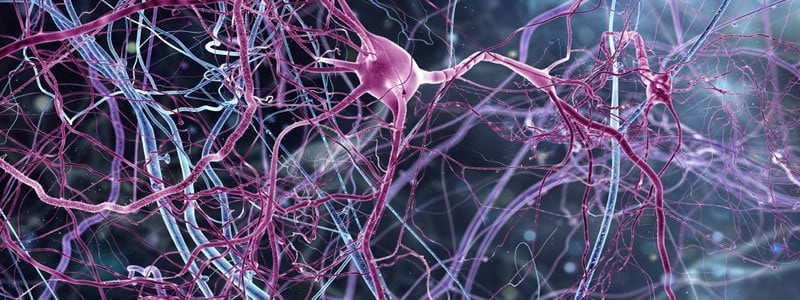Summary: Epigenetic regulation controls whether certain genes on each side of the brain are switched on or off. The findings shed light on why Parkinson’s disease often affects one side of the body before the other.
Source: Van Andel Research Institute
Scientists may have solved one of the most puzzling and persistent mysteries in neuroscience: why some people are “right-brained” while others are “left-brained.”
The answer lies in how certain genes on each side of the brain are switched “on” and “off” through a process called epigenetic regulation. The findings may explain why Parkinson’s disease and other neurological disorders frequently affect one side of the body first, a revelation that has far-reaching implications for development of potential future treatments.
The study was led by Van Andel Institute’s Viviane Labrie, Ph.D., and published in the journal Genome Biology.
“The mechanisms underlying brain asymmetry have been an elephant in the room for decades,” Labrie said. “It’s thrilling to finally uncover its cause, particularly given its potential for helping us better understand and, hopefully one day, better treat diseases like Parkinson’s.”
Each cell in the brain has the same genes but it is epigenetics that dictate whether those genes are switched “on” or “off.” Labrie and her collaborators found numerous epigenetic differences between the hemispheres of healthy brains that are linked to variations in gene activity. Notably, these differences, or asymmetry, could make one side of the brain more vulnerable to neurological diseases.
For example, epigenetic abnormalities on one side of the brain could make that hemisphere more susceptible to the processes that cause the death of brain cells in Parkinson’s. The differences in cell death across hemispheres leads to the appearance of the disease’s hallmark symptoms, such as tremor, on one side of the body before the other. As the disease progresses, symptoms on the side first affected often are more severe than symptoms on the other side of the body.
The findings also give scientists a vital window into the various biological pathways that contribute to symptom asymmetry in Parkinson’s, including brain cell development, immune function and cellular communication.
“We all start out with prominent differences between the left and right sides of our brains. As we age, however, our hemispheres become more epigenetically similar. For Parkinson’s, this is significant: people whose hemispheres are more alike early in life experienced faster disease progression, while people whose hemispheres were more asymmetric had slower disease progression,” Labrie said. “Many of these changes are clustered around genes known to impact Parkinson’s risk. There is huge potential to translate these findings into new therapeutic strategies.”

Labrie is already starting to look at this phenomenon in other neurological diseases like Alzheimer’s.
The study is one of the first to parse the molecular causes of brain asymmetry. Early research on the left versus right brain was conducted in the mid-20th century by Roger Sperry, whose groundbreaking work with split-brain patients earned him a Nobel Prize.
Authors include Peipei Li, Ph.D., Elizabeth Ensink, Sean Lang, Lee Marshall, Ph.D., and Meghan Schilthuis of Van Andel Institute; and Jared Lamp, Ph.D., and Irving Vega, Ph.D., of Michigan State University College of Human Medicine. The Flow Cytometry Core, Bioinformatics and Biostatistics Core and Pathology and Biorepository Core at Van Andel Institute and Integrated Mass Spectrometry Unit at Michigan State University also contributed to this work. Brain tissue was provided by the Parkinson’s UK Brain Bank, the NIH NeuroBioBank and the Michigan Brain Bank.
Funding: This work was supported by Van Andel Institute.
Labrie is supported by the U.S. Army Medical Research Materiel Command through the Parkinson’s Research Program Investigator-Initiated Research Award under award no. W81XWH1810512. Opinions, interpretations, conclusions and recommendations are those of the author and are not necessarily endorsed by the U.S. Army. Labrie also is supported by the National Institute of Neurological Disorders and Stroke of the National Institutes of Health under Award Number R21NS112614 and by Michigan State University through the Gibby & Friends vs. Parky Parkinson’s Disease Research Award. The content is solely the responsibility of the authors and does not necessarily represent the official views of the National Institutes of Health or other granting organizations.
About this neuroscience research article
Source:
Van Andel Research Institute
Media Contacts:
Beth Hinshaw Hall – Van Andel Research Institute
Image Source:
The image is credited to Van Andel Institute.
Original Research: Open access
“Hemispheric asymmetry in the human brain and in Parkinson’s disease is linked to divergent epigenetic patterns in neurons”. by Peipei Li, Elizabeth Ensink, Sean Lang, Lee Marshall, Meghan Schilthuis, Jared Lamp, Irving Vega & Viviane Labrie .
Genome Biology doi:10.1186/s13059-020-01960-1.
Abstract
Hemispheric asymmetry in the human brain and in Parkinson’s disease is linked to divergent epigenetic patterns in neurons
Background
Hemispheric asymmetry in neuronal processes is a fundamental feature of the human brain and drives symptom lateralization in Parkinson’s disease (PD), but its molecular determinants are unknown. Here, we identify divergent epigenetic patterns involved in hemispheric asymmetry by profiling DNA methylation in isolated prefrontal cortex neurons from control and PD brain hemispheres. DNA methylation is fine-mapped at enhancers and promoters, genome-wide, by targeted bisulfite sequencing in two independent sample cohorts.
Results
We find that neurons of the human prefrontal cortex exhibit hemispheric differences in DNA methylation. Hemispheric asymmetry in neuronal DNA methylation patterns is largely mediated by differential CpH methylation, and chromatin conformation analysis finds that it targets thousands of genes. With aging, there is a loss of hemispheric asymmetry in neuronal epigenomes, such that hemispheres epigenetically converge in late life. In neurons of PD patients, hemispheric asymmetry in DNA methylation is greater than in controls and involves many PD risk genes. Epigenetic, transcriptomic, and proteomic differences between PD hemispheres correspond to the lateralization of PD symptoms, with abnormalities being most prevalent in the hemisphere matched to side of symptom predominance. Hemispheric asymmetry and symptom lateralization in PD is linked to genes affecting neurodevelopment, immune activation, and synaptic transmission. PD patients with a long disease course have greater hemispheric asymmetry in neuronal epigenomes than those with a short disease course.
Conclusions
Hemispheric differences in DNA methylation patterns are prevalent in neurons and may affect the progression and symptoms of PD.
Feel Free To Share This Genetics News.






